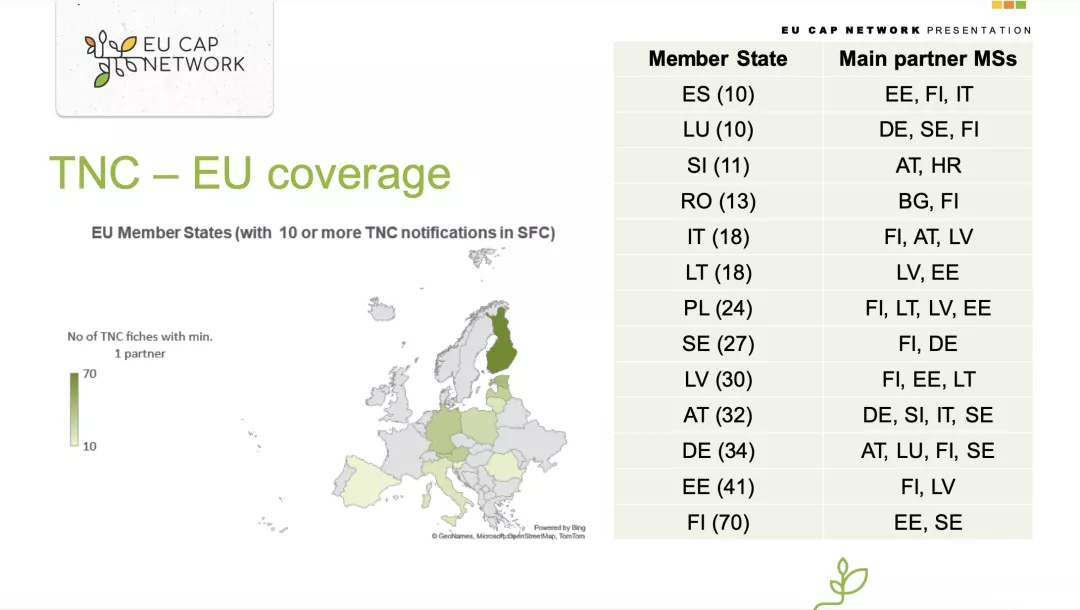Transnational cooperation: Overview of the 2014–2022 period
Transnational cooperation projects are a core component of the LEADER methodology and the results of LAG cooperation often showcase the added value that can be gained by using LEADER funding.
Transnational cooperation (TNC) projects have always been a core component of the LEADER methodology and the results of LAG cooperation often showcase the added value that can be gained by using LEADER funding. TNC’s potential was therefore highlighted at the first meeting of the EU CAP Network’s governance Subgroup on LEADER and territorial development.
TNC projects have covered a long list of project types during the 2014-2020 period, including business development, innovation, education and training, environmental improvements (embracing nature, landscape and climate), social inclusion, cultural heritage, tourism, food and drink, among others. These were the findings from an analytical overview of TNC projects presented in April to the EU CAP Network’s governance Subgroup on LEADER and territorial development.
Over 160 different TNC projects were included in this analysis, which noted that most cooperation projects were carried out between two EU countries, with a smaller proportion of cooperation projects involving partners from between three to six EU Member States. In addition to internal EU cooperation, some LAGs also benefitted from the wider experience of cooperating transnationally with non-EU countries such as Canada, China, Georgia, Moldova, North Macedonia, Turkey and Ukraine. Rural communities in these countries were also able to gain from LEADER sharing EU knowledge in the TNC projects’ various thematic topics.

The ability to share and learn through TNC activities varied between the EU Member States involved. Finland stood out as holding Europe’s most LEADER experience in TNC projects while Estonia, Germany, Sweden, Latvia, Poland and Austria also took advantage of many TNC opportunities. Typically, clusters of cooperating Member States emerged regionally as well as linguistically, e.g. in the Baltic Sea region or between German-speaking countries.
TNC tools provided by the EU through the European Network for Rural Development helped LAGs prepare and implement good practice approaches to cooperation between rural areas in different countries. These advisory guidelines include underlining enabling factors for successful TNC projects covering key considerations such as ensuring that the cooperation will create ‘significant added value to participating LAG areas’ and that the projects should be ‘implemented with well-defined and realistic objectives’.
More TNC projects reflecting these good practice goals are encouraged in the new CAP period through the funding provided by CAP Strategic Plans. This allows LAGs to plan and implement successful cooperation projects aligned with their Local Development Strategies that generate mutually beneficial results for all the partners involved. We at the EU CAP Network are keen to expand our library of TNC know-how for creating added value that would not have been possible without LEADER’s involvement, so please contact us with your examples of TNC good practices.